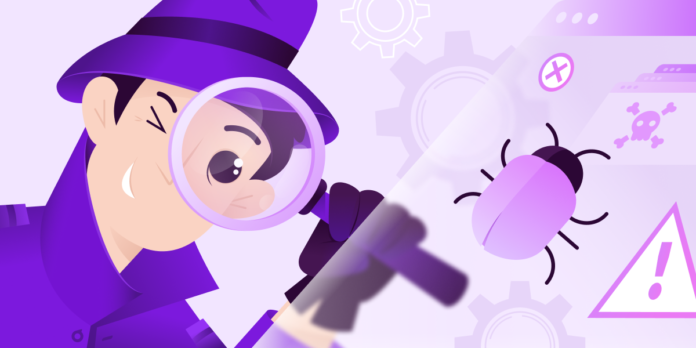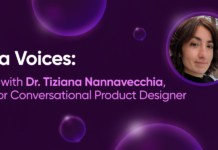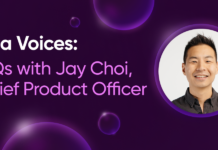How collaboration is key to top-notch Digital Customer Service
At Glia, we’ve redesigned customer service for a digital world. So, it only makes sense that when we guide our clients through an issue, we’re not doing it in the typical technical support fashion. In fact, Glia doesn’t have technical support roles — we have Client Engineering (CE). It’s a team that combines the ability to center our client’s needs with technical know-how, a hybrid of our Engineering and Solutions teams.
By resolving complex technical problems for clients, our Client Engineering team acts as the bridge between our clients and other teams at Glia. In a nutshell, this team helps us ensure that we don’t just build excellent Digital Customer Service products, but can also deliver excellent customer service while doing so.
Since Client Engineers are constantly interacting with product users, the input from the team is invaluable in constantly improving our tech. Here’s how we do it.
Daily detective work
“We are like technical detectives,” says German Breus, Director of Client Engineering at Glia. “We track down issues to find out if there’s an error on the client’s end, or if it’s a bug in the system.”
It’s true that CE conducts a lot of investigative work, which is certainly part of the appeal of these roles at Glia. When a client reports an issue, our Client Engineers aim to understand and solve it. But closing the ticket isn’t the final step — Client Engineers then figure out methods to ensure that this type of issue doesn’t happen again for this or other clients. This may mean adjusted training during onboarding, additional documentation, or another solution. We want our clients to get the most out of Glia right from the start and Client Engineers help make that happen.
“We’re not only trying to make our client feel happy about filing a ticket and knowing it will get resolved but also making sure they don’t have to file a ticket again,” says German.
A few of Glia’s highly collaborative Client Engineers finding solutions for our clients and laughs in between.
Why there is no “Tier 1” at Glia
The technical support industry has different tiers to identify the level of assistance required. With Client Engineering we’ve adjusted our tiers to suit us and our clients.
Traditionally, Tier 1 technical support covers everyday questions, which are not usually case-specific or technical. At Glia, we sidestep this tier entirely thanks to two factors.
First, as a B2B business we’ve developed a thorough onboarding process for our clients. A detailed onboarding process means that the contact center managers, integrators, and developers who use Glia daily know how to ask the right questions about their issue.
Second, armed with the “right questions,” clients can get answers without direct involvement from Client Engineering, from our thorough documentation library managed by our Technical Writing team. They’re able to do so effectively thanks to Client Engineers constantly providing input based on client feedback. This feedback loop continuously improves our documentation and sets up our tier structure differently from most other companies.
By ensuring that our clients can self-navigate Tier 1 level issues effectively, Glia’s Client Engineers begin their detective work at Tier 2 — tackling in-depth questions. Meanwhile, Tier 3 is curated professional service heavy on technical aspects — when our clients may need custom integrations or assistance with more complex issues.
“When an issue comes in, we start looking into it. We try to replicate it. We look at the logs to see what traces have been left,” says Pätris Halapuu, Client Engineer, Enablement and Operations. “We gather information from our clients to make sure that we fully understand what’s really going on to limit the amount of back and forth.”
Organizing Client Engineering to work for global clients
Being able to provide WhiteGlove Service means being able to offer it in a way that centers on the client. Although the majority are in the United States, our clients are spread out worldwide — and we want to start working on their issue as quickly as possible.
To provide this support, our Client Engineers have two rotations — day and evening. In general, Client Engineers take turns rotating through an evening shift once a month. The Client Engineers who work the evening shift one week work during the day the next. The rotations are scheduled in advance so everyone has time to plan ahead.
“We also take turns being on call to cover weekends and late-night shifts, so essentially there is always someone online to help our clients — 24/7,” says Pätris.
The many ways we collaborate
Collaboration is one of our core values and principles. These values guide the way that we work and are at the heart of what it means to be a Glianeer, especially in Client Engineering. Collaboration helps us to become better, whether it’s through team meetings, formal one-on-ones, or just friendly check-ins.
“Our weekly meetups are very popular because we always have a lot to talk about,” explains German. “This is the time to bring up non-urgent issues and learn about updates and new products. What’s most important is that everyone at Glia has the opportunity for a one-on-one with leadership to talk about anything.”
Client Engineers are often found discussing their tickets to find out how someone else can spot the problem — or maybe even the solution. By being highly collaborative, the team is able to expose less experienced Client Engineers to a variety of more complex issues creating an organic training and learning environment.
“Collaboration is key since we are trying to understand the symptoms of the problem because often we cannot solve it the first time around on our own — whether due to the complexity of the platform or the unique problem. The best we can do is make sure that the next time it happens, we [as Client Engineers] are well-equipped to tackle the problem,” explains German.
Some of the technical issues our Client Engineers help solve can become quite complex at times, so collaborating with other teams is essential. They’ll pair with:
- developers to expand knowledge and help with troubleshooting to get a better understanding of the issue.
- the Client Success team to support their WhiteGlove service philosophy.
- other Client Engineers, because other ideas and ways of thinking could lead to a better solution.
To improve our product, the team pairs with:
- the Technical Writing team to increase our collective knowledge to better teach our clients how to get the most out of Glia.
- the Product team, if something is not clear or intuitive for the client.
In collaborating with these teams, Client Engineers influence the articles and guides that clients can use in the future and even the way the product is iterated on. They’re not just a resource to our clients but also to other Glia teams who can leverage CE’s knowledge and feedback internally.
Glia’s values of mastery and perseverance also come into play. For example, a ticket is not closed until either everybody is satisfied with a solution or there are further steps in place to tackle the problem. Driven by our core value of mastery, it’s not uncommon to find Glianeers take a deep dive into learning an area of expertise outside of their team’s focus. For some Client Engineers — who are instinctively driven to investigate further — that has led to learning from and transitioning to another team, whether that’s a more technical role in engineering or a product-focused one.
What makes a good Client Engineer?
A Glia Client Engineer is that special mix of people person and tech-savvy. Client Engineers not only listen to the concerns of our clients but must also be perceptive enough to know which Glia team members to collaborate with on a specific case. They’re driven to dig deeper into the technology and help our clients get the most out of it.
Pätris says that “the perfect Client Engineer must be empathetic to clients, their concerns, and be willing to listen to discuss issues to find a solution.” German adds that “they must also be really curious and hungry for knowledge and not afraid to go deep into technical issues.”
Since Glia’s Client Engineers are constantly partnering with technical writers and developers, many enter the role with a technical background — quality assurance (QA) and junior developers tend to have an easy transition into the role.
It’s the satisfaction of having found a solution to a complex problem and the gratitude expressed by our clients that serves as daily motivation for our Client Engineers.
“Just wanted to say that Glia’s support is absolutely fantastic. Every person that I’ve worked with has been technically knowledgeable, responsive, articulate, and (most importantly as I get ramped up) incredibly patient. Thanks for the awesome support you guys provide.”
— Customer Representative
Does this sound like you? To learn more about working at Glia, visit our FAQs page. To help us find solutions to complex problems, check out our open roles.





